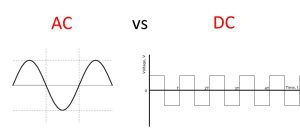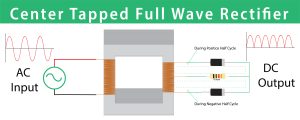How do inverters work?
In today’s tech-driven world, electricity is the life force that powers our homes and keeps our devices humming. But what if you find yourself off the grid or in a remote location without access to conventional power outlets? Enter inverters, those nifty devices that work behind the scenes to bring electricity where you need it most. In this blog post, we’ll pull back the curtain on the enchanting world of inverters and uncover the secrets of how they work their electrical energy conversion.
1. The Electric Jigsaw Puzzle: AC vs. DC Power

Before we unravel the inner workings of inverters, let’s start by differentiating between alternating current (AC) and direct current (DC) power. Most of our household appliances and electronic gadgets thrive on AC power. AC electricity exhibits a unique characteristic—it continually changes direction, cycling back and forth in a sine wave pattern. This oscillation is what powers your TV, refrigerator, and your smartphone charger when you plug them into the wall socket.
On the other hand, DC power flows in a single, unidirectional path, much like a river following a steady course. Batteries, solar panels, and some electronic devices operate on DC power. So, the challenge is clear: how do we bridge the gap between these two electrical worlds?
2. The Inverter’s Construction: Transforming DC into AC

The answer lies in the inverter’s transformative prowess. At its core, an inverter is a marvel of modern electronics. It’s a device that takes DC power as input and miraculously converts it into AC power at the output. But how does it pull off this mystical feat?
Rectification: The journey begins with rectification. The inverter’s first task is to smooth out the rough edges of DC power. This involves converting the pulsating or modified DC waveform into a more consistent form.
Inversion: Once the DC power is refined, the inverter’s electronic circuitry takes over. Semiconductor devices like transistors or thyristors work their function by switching on and off rapidly. This switching action creates a series of voltage pulses, cleverly timed and modulated to simulate the sine wave of standard AC power.
Waveform Refinement: While the resulting AC voltage is impressive, it might still carry some harmonic distortion and imperfections. This is where filtering and shaping come into play. Filters are employed to smooth out the waveform, reducing any unwanted harmonics and ensuring a cleaner, more stable AC output.
3. The Unveiling: AC Power at Your Fingertips
With the waveform finely tuned and shaped, the inverter provides the output through its dedicated AC outlets. These outlets serve as the gateway to a world of possibilities, allowing you to plug in and power a wide range of devices and appliances, just as if you were connected to a standard wall socket.
4. Safety and Efficiency: The Inverter’s Guardians
Modern inverters are not just guardians of electricity; they’re also guardians of safety and efficiency. They incorporate a range of safety features, including overload protection, short-circuit protection, and thermal protection, to safeguard both the inverter and the devices it powers. Furthermore, efficient inverters minimize energy losses during the conversion process, ensuring optimal utilization of the available DC power.
Conclusion: Inverters—The Engineers of Off-Grid Power
Inverters may not wear engineers’ caps, but they certainly perform electrical engineering, transforming DC into AC power with remarkable precision. These devices are the unsung heroes of off-grid living, emergency backup systems, and countless other applications where traditional power sources are out of reach. The next time you plug your laptop into a portable power pack or enjoy a cold beverage from your camping fridge, remember the inverter behind the scenes, quietly working its enchanting spell to bring electricity to your world, no matter where you are. For a more in-depth study of how inverter systems work view this article.
